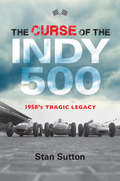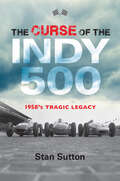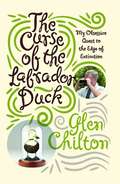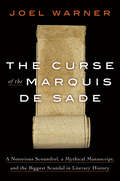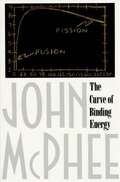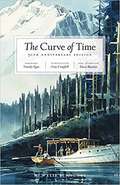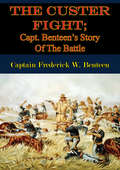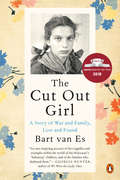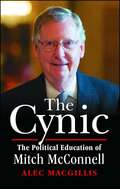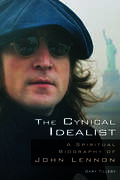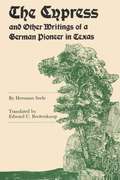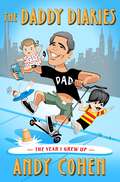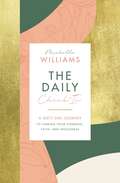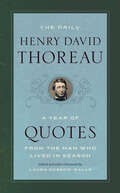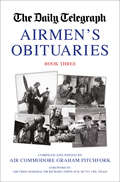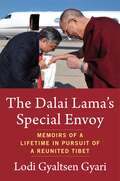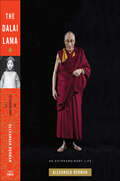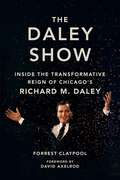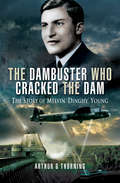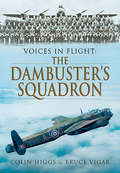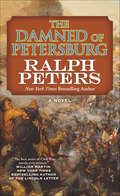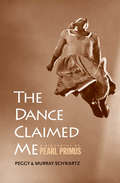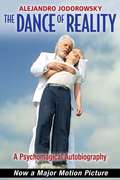- Table View
- List View
The Curse of the Indy 500: 1958's Tragic Legacy
by Stan SuttonOn May 30, 1958, thousands of racing fans poured into the infield at dawn to claim the best seats of the Indianapolis 500, unaware that they were going to witness one of the most notorious wrecks in racing history. Seconds after the green flag, a game of chicken spiraled out of control into a fiery 16-car pile-up that claimed the life of 29-year-old Indiana native and rising star Pat O’Connor. The other drivers escaped death, but the tragic 1958 Indy 500 seemed to leave its mark on them: the surviving drivers were hounded by accidents and terrible crashes, and most would die at tracks around the country. But the tragedy also prompted new regulations and safety precautions like roll bars that would ultimately save hundreds of lives. In The Curse of Indy 500: 1958’s Tragic Legacy, veteran sportswriter Stan Sutton profiles the ill-fated race and the careers of the drivers involved, highlighting their lives in the dangerous world of auto racing.
The Curse of the Indy 500: 1958's Tragic Legacy
by Stan Sutton“[A] rich history built around the 1958 tragedy that claimed one of the Indy 500’s most beloved drivers . . . evokes a unique and unforgettable era.” —Dan Carpenter, freelance writer, former Indianapolis Star columnistOn May 30, 1958, thousands of racing fans poured into the infield at dawn to claim the best seats of the Indianapolis 500, unaware that they were going to witness one of the most notorious wrecks in racing history. Seconds after the green flag, a game of chicken spiraled out of control into a fiery 16-car pile-up that claimed the life of 29-year-old Indiana native and rising star Pat O’Connor. The other drivers escaped death, but the tragic 1958 Indy 500 seemed to leave its mark on them: the surviving drivers were hounded by accidents and terrible crashes, and most would die at tracks around the country. But the tragedy also prompted new regulations and safety precautions like roll bars that would ultimately save hundreds of lives. In The Curse of Indy 500: 1958’s Tragic Legacy, veteran sportswriter Stan Sutton profiles the ill-fated race and the careers of the drivers involved, highlighting their lives in the dangerous world of auto racing.“In all, the book offers an exciting story of the 1958 Indy 500 and a thought-provoking discussion of its aftermath.” —Daily Journal“A meticulous contextual account of events leading into what possibly triggered the starting tension, what follows in the wake of the fiery first-lap death of Pat O’Conner, and what other Indy 500 tragedies have failed to get the notice generated on and following May 30, 1958.” —NUVO
The Curse of the Labrador Duck
by Glen ChiltonIn an obsessive 82,000-mile quest for dead birds, how much trouble can one scientist get into? Finally, the world's leading authority on the extinct Labrador Duck, Dr. Glen Chilton, shares the story of his frenzied obsession to reveal the histories behind the mysterious bird -- a saga wherein he sets out to examine the remains of every Labrador Duck, conduct genetic analysis on every Labrador Duck egg, and visit every site where the duck was shot...with many a (mis)adventure along the way. More elusive than the Passenger Pigeon, the Dodo, or the Great Auk and breeding in places so obscure that no certain records exist of its nests, the Labrador Duck succumbed to extinction almost before anyone realized it was in decline. When Chilton began his travels, there were thought to be approximately fifty stuffed specimens, scattered among the museums of Europe and North America. However, as his search progressed, it became clear that some specimens had been lost to war and theft, while others lay hidden in far-flung collections, overseen by secretive curators. After traveling the equivalent of 3.3 times around the world with a series of oddball companions, Chilton finally began to close in on every known specimen...but not before he risked heavy-metal poisoning in Russia, swam naked in a glacier-fed stream, corresponded with a millionaire murderer, and narrowly avoided arrest in New York City. A magnificent blend of travel writing, science, detective work, and mishap, The Curse of the Labrador Duck is the zany adventure of one biologist's obsessive quest to uncover the mysteries of one of the world's most enigmatic birds.
The Curse of the Marquis de Sade: A Notorious Scoundrel, a Mythical Manuscript, and the Biggest Scandal in Literary History
by Joel WarnerThe captivating, deeply reported true story of how one of the most notorious novels ever written—Marquis de Sade&’s 120 Days of Sodom—landed at the heart of one of the biggest scams in modern literary history.&“Reading The Curse of the Marquis de Sade, with the Marquis, the sabotage of rare manuscript sales, and a massive Ponzi scheme at its center, felt like a twisty waterslide shooting through a sleazy and bizarre landscape. This book is wild.&”—Adam McKay, Academy Award–winning filmmakerDescribed as both &“one of the most important novels ever written&” and &“the gospel of evil,&” 120 Days of Sodom was written by the Marquis de Sade, a notorious eighteenth-century aristocrat who waged a campaign of mayhem and debauchery across France, evaded execution, and inspired the word &“sadism,&” which came to mean receiving pleasure from pain. Despite all his crimes, Sade considered this work to be his greatest transgression.The original manuscript of 120 Days of Sodom, a tiny scroll penned in the bowels of the Bastille in Paris, would embark on a centuries-spanning odyssey across Europe, passing from nineteenth-century banned book collectors to pioneering sex researchers to avant-garde artists before being hidden away from Nazi book burnings. In 2014, the world heralded its return to France when the scroll was purchased for millions by Gérard Lhéritier, the self-made son of a plumber who had used his savvy business skills to upend France&’s renowned rare-book market. But the sale opened the door to vendettas by the government, feuds among antiquarian booksellers, manuscript sales derailed by sabotage, a record-breaking lottery jackpot, and allegations of a decade-long billion-euro con, the specifics of which, if true, would make the scroll part of France&’s largest-ever Ponzi scheme.Told with gripping reporting and flush with deceit and scandal, The Curse of the Marquis de Sade weaves together the sweeping odyssey of 120 Days of Sodom and the spectacular rise and fall of Lhéritier, once the &“king of manuscripts&” and now known to many as the Bernie Madoff of France. At its center is an urgent question for all those who cherish the written word: As the age of handwriting comes to an end, what do we owe the original texts left behind?
The Curve of Binding Energy: A Journey into the Awesome and Alarming World of Theodore B. Taylor
by John McPheeThis is a book about nuclear energy both for electric power production and for bombs. In particular, it focuses on the dangers of a single person or small group obtaining the materials (most likely from some part of the nuclear power production system) to produce a bomb. The level of worry about this possibility come mainly from a particular nuclear physicist, Ted Taylor. But the sources for this book range far and wide over both the history and people involved in both nuclear bomb making and nuclear power production.
The Curve of Time
by M. Wylie BlanchetThis is a biography and astonishing adventure story of a woman who, left a widow in 1927, packed her five children onto a 25-foot boat and cruised the coastal waters of British Columbia, summer after summer.Muriel Wylie Blanchet acted single-handedly as skipper, navigator, engineer and, of course, mum, as she saw her crew through encounters with tides, fog, storms, rapids, cougars and bears. She sharpened in her children a special interest in Haida culture and in nature itself. In this book, she left us with a sensitive and compelling account of their journeys.
The Custer Fight; Capt. Benteen’s Story Of The Battle
by E. A. Brininstool Captain Frederick W. BenteenFOR THE FIRST TIME since he testified before the Reno Court of Inquiry, at Chicago, in 1879, Capt. F. W. Benteen, senior captain of Custer's regiment, the famous 7th Cavalry, here relates the part he played in that most disastrous of Indian fights on American soil, over which more controversy has raged than over any other battle fought against the red man in the United States.Much of the account is from his own testimony at the Reno Inquiry; some of it is from the personal letters of Capt. Benteen, (in possession of the author). Certain charges were made against Major Marcus A. Reno and Capt. Benteen by Frederick Whittaker, Custer's biographer. At the last moment Whittaker withdrew his charges against Capt. Benteen. He also utterly failed to substantiate his charges against Major Reno, the verdict of the Court being that "there was nothing in his conduct which requires animadversion from the Court, and that in view of all the facts in evidence, no further proceedings are necessary in this case."No officer in the Civil War won a more brilliant record than Major Reno, he being brevetted by grades from a first lieutenant to a colonel ''for gallant and meritorious service." Later, he served as Assistant Instructor of Infantry Tactics at the U. S. Military Academy at West Point.The testimony at the Reno Inquiry revealed that both Capt. Benteen and Major Reno had done the best that could be done with what they had to do with, and that, but for their extraordinary heroism and bravery in the fight on the bluffs, following Custer's overwhelming defeat, four miles down the river, the troops under their charge would likewise have been wiped out.Students of the battle of the Little Big Horn will do well to carefully preserve this account of the Custer fight as related by Capt. Benteen.
The Cut Out Girl: A Story of War and Family, Lost and Found
by Bart Van EsThe extraordinary true story of a young Jewish girl in Holland under Nazi occupation who finds refuge in the homes of an underground network of foster families, one of them the author's grandparentsBart van Es left Holland for England many years ago, but one story from his Dutch childhood never left him. It was a mystery of sorts: a young Jewish girl named Lientje had been taken in during the war by relatives and hidden from the Nazis, handed over by her parents, who understood the danger they were in all too well. The girl had been raised by her foster family as one of their own, but then, well after the war, there was a falling out, and they were no longer in touch. What was the girl's side of the story, Bart wondered? What really happened during the war, and after?So began an investigation that would consume Bart van Es's life, and change it. After some sleuthing, he learned that Lientje was now in her 80s and living in Amsterdam. Somewhat reluctantly, she agreed to meet him, and eventually they struck up a remarkable friendship, even a partnership. The Cut Out Girl braids together a powerful recreation of that intensely harrowing childhood story of Lientje's with the present-day account of Bart's efforts to piece that story together, including bringing some old ghosts back into the light. It is a story rich with contradictions. There is great bravery and generosity--first Lientje's parents, giving up their beloved daughter, and then the Dutch families who face great danger from the Nazi occupation for taking Lientje and other Jewish children in. And there are more mundane sacrifices a family under brutal occupation must make to provide for even the family they already have. But tidy Holland also must face a darker truth, namely that it was more cooperative in rounding up its Jews for the Nazis than any other Western European country; that is part of Lientje's story too. Her time in hiding was made much more terrifying by the energetic efforts of the local Dutch authorities, zealous accomplices in the mission of sending every Jew, man, woman and child, East to their extermination. And Lientje was not always particularly well treated, and sometimes, Bart learned, she was very badly treated indeed. The Cut Out Girl is an astonishment, a deeply moving reckoning with a young girl's struggle for survival during war, a story about the powerful love of foster families but also the powerful challenges, and about the ways our most painful experiences define us but also can be redefined, on a more honest level, even many years after the fact. A triumph of subtlety, decency and unflinching observation, The Cut Out Girl is a triumphant marriage of many keys of writing, ultimately blending them into an extraordinary new harmony, and a deeper truth.
The Cyclist's Dangerous Secret (Fountas & Pinnell Classroom, Guided Reading Grade 6)
by Aaron FinnA HERO ON WHEELS During World War II, a beloved celebrity athlete from Italy managed to save hundreds of people without ever entering a battle. Gino Bartali heroically saved lives just by pedaling his bicycle. NIMAC-sourced textbook
The Cynic: The Political Education of Mitch McConnell
by Alec MacgillisFrom a dogged political reporter, an investigation into the political education of Mitch McConnell and an argument that this powerful Senator embodies much of this country's political dysfunction.Based on interviews with more than seventy-five people who have worked alongside Mitch McConnell or otherwise interacted with him over the course of his career, The Cynic, which will be published as an original ebook, is both a comprehensive biography of one of this country's most powerful politicians and a damning diagnosis of this country's eroding political will. Tracing his rise from a pragmatic local official in Kentucky to the leader of the Republican opposition in Washington, the book tracks McConnell's transformation from a moderate Republican who supported abortion rights and public employee unions to the embodiment of partisan obstructionism and conservative orthodoxy on Capitol Hill. Driven less by a shift in ideological conviction than by a desire to win elections and stay in power at all costs, McConnell's transformation exemplifies the "permanent campaign" mindset that has come to dominate American government. From his first race for local office in 1977--when the ad crew working on it nicknamed McConnell "love-me-love-me" for his insecurity and desire to please--to his fraught accommodation of the Tea Party, McConnell's political career is a story of ideological calcification and a vital mirror for understanding this country's own political development and what is wrought when politicians serve not at the behest of country, but at the behest of party and personal aggrandizement.
The Cynical Idealist
by Gary TilleryA radio playlist could easily follow John Lennon's "Mind Games" with "Do Ya Think I'm Sexy." But comparing the two, it becomes obvious that Lennon had more in common with the great thinkers of any age than with the songwriters who were his contemporaries. Cynical Idealist reveals, for the first time, the spiritual odyssey of this extraordinary man. Out of a turbulent life, from his troubled, working-class childhood throughout his many roles -- Beatle, peace advocate, social activist, househusband -- Lennon managed to fashion a philosophy that elevates the human spirit and encourages people to work, individually and collectively, toward a better world. Like Socrates, Lennon wanted to stimulate people to think for themselves. "There ain't no guru who can see through your eyes," he sings in "I Found Out." Cynical Idealist beautifully articulates this and the other lessons John Lennon passed along through his songs and through the example of his life.
The Cypress and Other Writings of a German Pioneer in Texas
by Hermann Seele translated by Edward C. BreitenkampWhen Hermann Seele anived in New Braunfels in 1845, the raw colony was plagued by poverty, disease, lack of food, and hostile Indians. This personal record of the Germans in Texas shows their evolution from struggling colonists to prosperous citizens. From his viewpoint of a hardworking yet imaginative pioneer, Seele presents first a history of German immigration and settlement in Texas during the nineteenth century. Next, his autobiographical writings range from a "sentimental recollection" of his first Christmas Eve in Texas to his first day of teaching in New Braunfels, from accounts of the popular singing society to murder and justice along the Comal River. In addition, Seele's romantic novel, The Cypress, is a delightful though improbable tale of a traveling botanist, a chieftain's daughter, and a savage Indian cult. Hermann Seele--farmer, lawyer, teacher, lay preacher, mayor, state representative, Civil War major, and editor--epitomizes the best of the German immigrants who established their communities as models of respectability and prosperity. When Hermann Seele anived in New Braunfels in 1845, the raw colony was plagued by poverty, disease, lack of food, and hostile Indians. This personal record of the Germans in Texas shows their evolution from struggling colonists to prosperous citizens. From his viewpoint of a hardworking yet imaginative pioneer, Seele presents first a history of German immigration and settlement in Texas during the nineteenth century. Next, his autobiographical writings range from a "sentimental recollection" of his first Christmas Eve in Texas to his first day of teaching in New Braunfels, from accounts of the popular singing society to murder and justice along the Comal River. In addition, Seele's romantic novel, The Cypress, is a delightful though improbable tale of a traveling botanist, a chieftain's daughter, and a savage Indian cult. Hermann Seele--farmer, lawyer, teacher, lay preacher, mayor, state representative, Civil War major, and editor--epitomizes the best of the German immigrants who established their communities as models of respectability and prosperity.
The Daddy Diaries: The Year I Grew Up
by Andy CohenThe Instant New York Times Bestseller!New York Times bestselling author Andy Cohen goes from bottle service to baby bottles in a hilarious, heartwarming, and name-dropping account of the most important year of his life.Andy Cohen has taken on the most important job of his life—father— and boy (and girl!) does he have a lot to say about it!One of Andy Cohen’s most momentous years starts off with a hangover the morning after an epic New Year’s Eve broadcast. But Andy doesn’t have time to dwell on the drama, as his role as media mogul is now matched with the responsibilities, joys, and growing pains of parenthood.This fast-paced, mile-a-minute look behind the scenes of living the so-called glamorous life in Manhattan now takes firm aim at life at home. With a three-year-old son, Ben, and a daughter, Lucy, born in May, stories of late-night parties are replaced by early mornings with Ben, drama at the play-ground, and the musings of a single dad trying to navigate having it all. All this is set against the backdrop of constant Housewives drama, hijinks behind the scenes at Watch What Happens Live, a revolving door of famous faces, and a worried mother (and newly minted grandmother) in St. Louis.Buckle up, bottle up, and get ready for a laugh-out-loud and surprisingly poignant look at the ways in which family changes everything and the superficial gets very real. Watch what happens!
The Daily Check-In: A 60-Day Journey to Finding Your Strength, Faith, and Wholeness
by Michelle WilliamsIn The Daily Check-In, singer and actress Michelle Williams helps readers process the emotions that cause them to feel overwhelmed and gives them powerful strategies for discovering freedom and wholeness.In her book Checking In, Michelle Williams shared the painful seasons of struggle that left her feeling like she couldn't go on. In the midst of her wrestling, she came to realize her crucial need for connection--with God, herself, and others--and developed strategies for checking in with each.Her life-giving strategies have helped her overcome the thoughts and emotions that once threatened to derail her. Now she shares those strategies with readers who are on their own journeys toward mental wholeness--and who want to discover how to be free to live an abundant life.In this sixty-day guided journal, Williams leads readers through the process of identifying the thoughts, emotions, and behaviors that leave them feeling overwhelmed, unfulfilled, and alone. Through her unique blend of tender, sometimes humorous, and often thought-provoking wisdom, Williams shows readers how to overcome difficult circumstances and relationships with life-giving honesty and connection, offeringpowerful readings about overwhelming emotions and healing from hurt;key scriptures that emphasize the importance of checking in with God, themselves, and others;journaling prompts for personal processing; andshort prayers to help readers lean on God for insight, strength, and courage on their journey toward mental wholeness.
The Daily Henry David Thoreau: A Year of Quotes from the Man Who Lived in Season (A Year of Quotes)
by Henry David Thoreau“Live in each season as it passes; breathe the air, drink the drink, taste the fruit, and resign yourself to the influence of each.” Modernity rules our lives by clock and calendar, dividing the stream of time into units and coordinating every passing moment with the universal globe. Henry David Thoreau subverted both clock and calendar, using them not to regulate time’s passing but to open up and explore its presence. This little volume thus embodies, in small compass, Thoreau’s own ambition to “live in season”—to turn with the living sundial of the world, and, by attuning ourselves to nature, to heal our modern sense of discontinuity with our surroundings. Ralph Waldo Emerson noted with awe that from flowers alone, Thoreau could tell the calendar date within two days; children remembered long into adulthood how Thoreau showed them white waterlilies awakening not by the face of a clock but at the first touch of the sun. As Thoreau wrote in Walden, “Time is but the stream I go a-fishing in. I drink at it; but while I drink I see the sandy bottom and detect how shallow it is.” Drawn from the full range of Thoreau’s journals and published writings, and arranged according to season, The Daily Henry David Thoreau allows us to discover the endless variation and surprise to be found in the repetitions of mundane cycles. Thoreau saw in the kernel of each day an earth enchanted, one he honed into sentences tuned with an artist’s eye and a musician’s ear. Thoreau’s world lives on in his writing so that we, too, may discover, even in a fallen world, a beauty worth defending.
The Daily Telegraph Airmen's Obituaries: Book Three (The Daily Telegraph #3)
by Air Commodore Graham PitchforkTwelve years since The Daily Telegraph Airmen’s Obituaries Book Two was published, Air Commodore Graham Pitchfork has compiled eighty-five obituaries of outstanding aviators. With a focus on personnel from a range of air forces, including the RAF, USAF, RCAF, RNZAF and SAAF, there are a number of fascinating and distinguishable lives to read about. Those featured include MRAF Sir Michael Beetham, the longest-serving Chief of Air Staff in the RAF (apart from its founder Lord Trenchard); Brigadier General Paul Tibbets who commanded the USAAF bomber Enola Gay, which dropped the atom bomb on Hiroshima on August 6, 1945 and Wing Commander ‘Dal’ Russel, a highly decorated wartime Canadian fighter pilot, whose logbook recorded kills in the Battle of Britain and the Normandy invasion. There is also Lettice Curtis, the first woman qualified to fly a four-engine bomber and who by the end of the Second World War had flown over 400 heavy bombers, 150 Mosquitos and hundreds of Hurricanes and Spitfires as part of her role in the Air Transport Auxiliary. The book includes a foreword written by former Chief of Air Staff, Sir Richard Johns.
The Dalai Lama's Special Envoy: Memoirs of a Lifetime in Pursuit of a Reunited Tibet
by Lodi Gyaltsen GyariLodi Gyaltsen Gyari spent decades drawing attention to the plight of the Tibetan people and striving for resolution of the Tibetan-Chinese conflict. He was the Dalai Lama’s Special Envoy and chief negotiator with the People’s Republic of China in the formal negotiations over the status of Tibet. In this revealing memoir, Gyari chronicles his lifetime of service to the Dalai Lama and the Tibetan cause.Gyari recounts his work conducting formal dialogue with the Chinese leadership from 2002 to 2012, as well as his efforts during the many years of quiet diplomacy preceding these historic negotiations. He details the fits and starts of the parties’ relationship, addressing successes as well as failures and highlighting misperceptions, missteps, and missed opportunities by both sides. Gyari grounds his recollections of his time as Special Envoy in his life experience, providing a powerful account of the personal side of Tibet’s struggles. He describes the Tibetan resistance to the Chinese invasion and the tumultuous early years of the Tibetan community in exile as well as his family’s history and spiritual lineage. A reincarnated Tibetan Buddhist lama forced to flee Tibet during the Chinese invasion, Gyari illuminates how his political efforts fulfilled his spiritual calling.Informed by his unparalleled experiences, Gyari offers realizable—but provocative—recommendations for restarting the Tibetan-Chinese dialogue to achieve a mutually beneficial resolution of the issue. For all readers interested in Tibet’s complex modern history, this book offers an incomparable look inside the decades-long effort to achieve the Dalai Lama’s vision of a reunited Tibet.
The Dalai Lama, a Policy of Kindness: An Anthology of Writings By and About the Dalai Lama
by Sidney PiburnThis is an introduction to Dalai Lama's life and teachings. It contains a number of interesting articles about the Dalai Lama including enlightening speeches and addresses by him.
The Dalai Lama: An Extraordinary Life
by Alexander NormanThe first definitive biography of the Nobel Peace Prize-winning spiritual leader—a story by turns inspiring, surprising—from an acclaimed Tibetan scholar.The Dalai Lama’s message of peace and compassion resonates with people of all faiths and none. Yet, for all his worldwide fame, he remains personally elusive. Now, Alexander Norman, acclaimed Oxford-trained scholar of the history of Tibet, delivers the definitive biography—unique, multilayered, and at times even shocking. The Dalai Lama illuminates an astonishing odyssey from isolated Tibetan village to worldwide standing as spiritual and political leader of one of the world’s most profound and complex cultural traditions. Norman reveals that, while the Dalai Lama has never been comfortable with his political position, he has been a canny player—at one time CIA-backed—who has maneuvered amidst pervasive violence, including placing himself at the center of a dangerous Buddhist schism. Yet even more surprising than the political, Norman convinces, is the Dalai Lama’s astonishing spiritual practice, rooted in magic, vision, and prophecy—details of which are illuminated in this book for the first time.A revelatory life story of one of today’s most radical, charismatic, and beloved world leaders.“Impressive in its clarity . . . this biography [is] the most detailed and accurate to date.” —The New York Times Book Review “His supple prose, often beautiful, is as adept at explaining Tibet’s theology as it is at describing its spiritual world.” —The Wall Street Journal “[Norman] brings well-grounded authority to his portrayal of a figure revered throughout the world for his joyfulness, generosity, and compassion.” —Kirkus Reviews
The Daley Show: Inside the Transformative Reign of Chicago's Richard M. Daley
by Forrest Claypool“You have to have passion. You have to have honesty in office. You have to love the people.” Those words summed up the outlook, if not always the actions, of Chicago Mayor Richard M. Daley. Elected to govern a city roiled by racial and economic crises, Daley adroitly wielded the tools of power in the rough-and-tumble world of Chicago politics. Under his rule, Chicago rebuilt a dying downtown, becoming a cultural and tourism mecca punctuated by construction of the iconic Millenium Park. To drive growth, he engineered a massive expansion of O’Hare Airport. To correct a historical injustice, he razed the city’s notorious public housing high rises as part of a sweeping plan to transform the lives of the city’s poorest residents. Yet corruption and graft, City Hall’s role in calamities like the 1995 heat wave, and Daley’s inaction in the face of evidence of police torture, tarnished his many accomplishments. A two-time Daley chief-of-staff, Forrest Claypool draws on his long career in local government to examine the lasting successes, ongoing dramas, and disastrous failures that defined Daley’s twenty-two years in City Hall. Throughout, Claypool uses Daley’s career to illustrate how effectual political leadership relies on an adept and unapologetic use of power--and how wielding that power without challenge inevitably pulls government toward corruption. A warts-and-all account of a pivotal figure in Chicago history, The Daley Show tells the story of how Richard M. Daley became the quintessential big city mayor.
The Dambuster Who Cracked the Dam: The Story of Melvin ‘Dinghy’ Young
by Arthur G. ThorningOn September 25, 1939 Melvin Young reported to No. 1 Initial Training Unit. He was selected as a bomber pilot and promoted to Flying Officer. Having undertaken a Lancaster conversion course Melvin and his new crew were posted to 57 Squadron at Scampton soon to become 617 Squadron. On 15 May the Order for Operation Chastise was issued—the raid to be flown the next night, 16/17 May. The plan for the operation was that three waves of aircraft would be employed. The first wave of nine aircraft, led by Gibson, would first attack the Mohne Dam, then the Eder followed by other targets as directed by wireless from 5 Group HQ if any weapons were still available. This wave would fly in three sections of three aircraft about ten minutes apart led by Guy Gibson, Melvin Young and Henry Maudslay. At 00.43 Melvin and his crew made their attempt on the Mohne dam. Gibson recorded that Youngs weapon made three good bounces and contact. Once the dam had been breached Gibson with Melvin as his deputy led the three remaining armed aircraft towards the Eder Dam. On the return trip Melvin Young and his crew fell victim to enemy guns. At 02.58 gunners at Castricum-an-Zee reported shooting down an aircraft and several batteries also reported firing at it. A.J.-A crashed into the sea. Over the North Sea, Guy Gibson called Melvin on the radiothere was no reply.
The Dambuster's Squadron: The Dambuster's Squadron (Voices in Flight)
by Colin Higgs Bruce VigarThey were the Dambusters the pilots and crew of the RAFs elite 617 Squadron. They flew the most difficult missions. They breached the Dams! They sank the Tirpitz! They were the only squadron to drop the immense Grand Slam bombs and with them they destroyed bridges, viaducts and even Hitlers impregnable U-boat pens.In this unique book, introduced by Dams raid survivor, George Johnny Johnson, authors Colin Higgs and Bruce Vigar present no less than nine exclusive interviews with men who flew and fought in 617 Squadron during the Second World War. These men took part in virtually every operation the Squadron flew and went on some of the most daring and dangerous missions of the war. The result is one of the most vivid and unforgettable accounts of the RAF at war ever written.
The Damned of Petersburg: A Novel (The Battle Hymn Cycle #4)
by Ralph PetersNew York Times–Bestselling Author: “Yet another brilliant addition to the best series of Civil War novels ever written.” —William Martin, author of The Lincoln LetterThe fourth installment in the Boyd Award–winning seriesAs Grant pinned Lee to Petersburg and Richmond, the Confederacy’s stubborn Army of Northern Virginia struggled against a relentless Union behemoth, with breathtaking valor and sacrifice on both sides. That confrontation in the bloody summer and fall of 1864 shaped the nation we know today.From the butchery of The Crater, where stunning success collapsed into a massacre, through near-constant battles fought by heat-stricken soldiers, to the crucial election of 1864, The Damned of Petersburg resurrects our Civil War’s hard reality, as plumes and sabers gave way to miles of trenches.Amid the slaughter of those fateful months, fabled leaders—Grant and Lee, Winfield Scott Hancock and A.P. Hill—turned to rising heroes, Confederates “Little Billy” Mahone and Wade Hampton, last of the cavaliers, or Union warriors such as tragedy-stricken Francis Channing Barlow and fearless Nelson Miles, a general at twenty-four.Nor does Ralph Peters forget the men in the ranks, the common soldiers who paid the price for the blunders of leaders who’d never know their names. In desperate, now-forgotten battles such as Deep Bottom, Globe Tavern, and Reams Station, soldiers pushed to the last human limits fought on as their superiors struggled to master a terrible new age of warfare. The Damned of Petersburg revives heroes aplenty—enriching our knowledge of our most terrible war—but, above all, stands as a tribute to the endurance and courage of the American soldier, North or South.“[An] excellent historical novel.” —John Horn, author of The Siege of Petersburg
The Dance Claimed Me: A Biography of Pearl Primus
by Murray Schwartz Peggy SchwartzPearl Primus (1919-1994) blazed onto the dance scene in 1943 with stunning works that incorporated social and racial protest into their dance aesthetic. In The Dance Claimed Me, Peggy and Murray Schwartz, friends and colleagues of Primus, offer an intimate perspective on her life and explore her influences on American culture, dance, and education. They trace Primus's path from her childhood in Port of Spain, Trinidad, through her rise as an influential international dancer, an early member of the New Dance Group (whose motto was "Dance is a weapon"), and a pioneer in dance anthropology. Primus traveled extensively in the United States, Europe, Israel, the Caribbean, and Africa, and she played an important role in presenting authentic African dance to American audiences. She engendered controversy in both her private and professional lives, marrying a white Jewish man during a time of segregation and challenging black intellectuals who opposed the "primitive" in her choreography. Her political protests and mixed-race tours in the South triggered an FBI investigation, even as she was celebrated by dance critics and by contemporaries like Langston Hughes. For The Dance Claimed Me, the Schwartzes interviewed more than a hundred of Primus's family members, friends, and fellow artists, as well as other individuals to create a vivid portrayal of a life filled with passion, drama, determination, fearlessness, and brilliance.
The Dance of Reality: A Psychomagical Autobiography
by Alejandro JodorowskyA glimpse into the mind and life of one of the most creative and enigmatic visionaries of our time, filmmaker Alejandro Jodorowsky • Retraces the spiritual and mystical path Jodorowsky has followed since childhood, vividly repainting events from the perspective of an unleashed imagination • Explores the development of the author’s psychomagic and metagenealogy practices via his realization that all problems are rooted in the family tree • Includes photos from Jodorowsky’s appearance at the 2013 Cannes Film Festival and from the film based on this book, which debuted at Cannes Retracing the spiritual and mystical path he has followed since childhood, Alejandro Jodorowsky re-creates the incredible adventure of his life as an artist, filmmaker, writer, and therapist--all stages on his quest to push back the boundaries of both imagination and reason. Not a traditional autobiography composed of a chronological recounting of memories, The Dance of Reality repaints events from Jodorowsky’s life from the perspective of an unleashed imagination. Like the psychomagic and metagenealogy therapies he created, this autobiography exposes the mythic models and family templates upon which the events of everyday life are founded. It reveals the development of Jodorowsky’s realization that all problems are rooted in the family tree and explains, through vivid examples from his own life, particularly interactions with his father and mother, how the individual’s road to true fulfillment means casting off the phantoms projected by parents on their children. The Dance of Reality is autobiography as an act of healing. Through the retelling of his own life, the author shows we do not start off with our own personalities, they are given to us by one or more members of our family tree. To be born into a family, Jodorowsky says, is to be possessed. To peer back into our past is equivalent to digging into our own souls. If we can dig deep enough, beyond familial projections, we shall find an inner light--a light that can help us through life’s most difficult tests. Offering a glimpse into the mind and life of one of the most creative and enigmatic visionaries of our time, The Dance of Reality is the book upon which Jodorowsky’s critically acclaimed 2013 Cannes Film Festival film of the same name was based.
